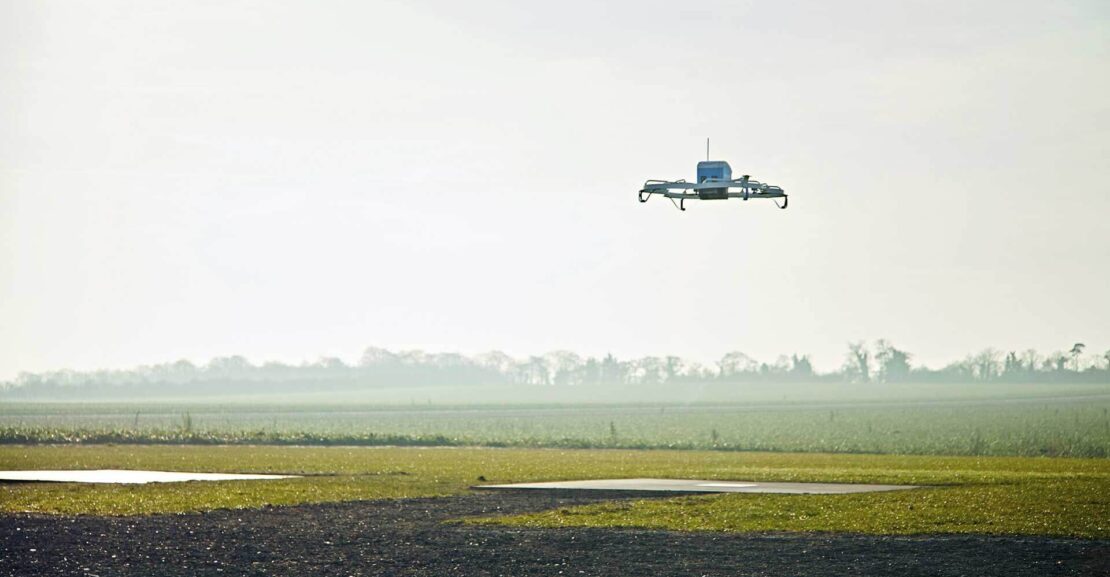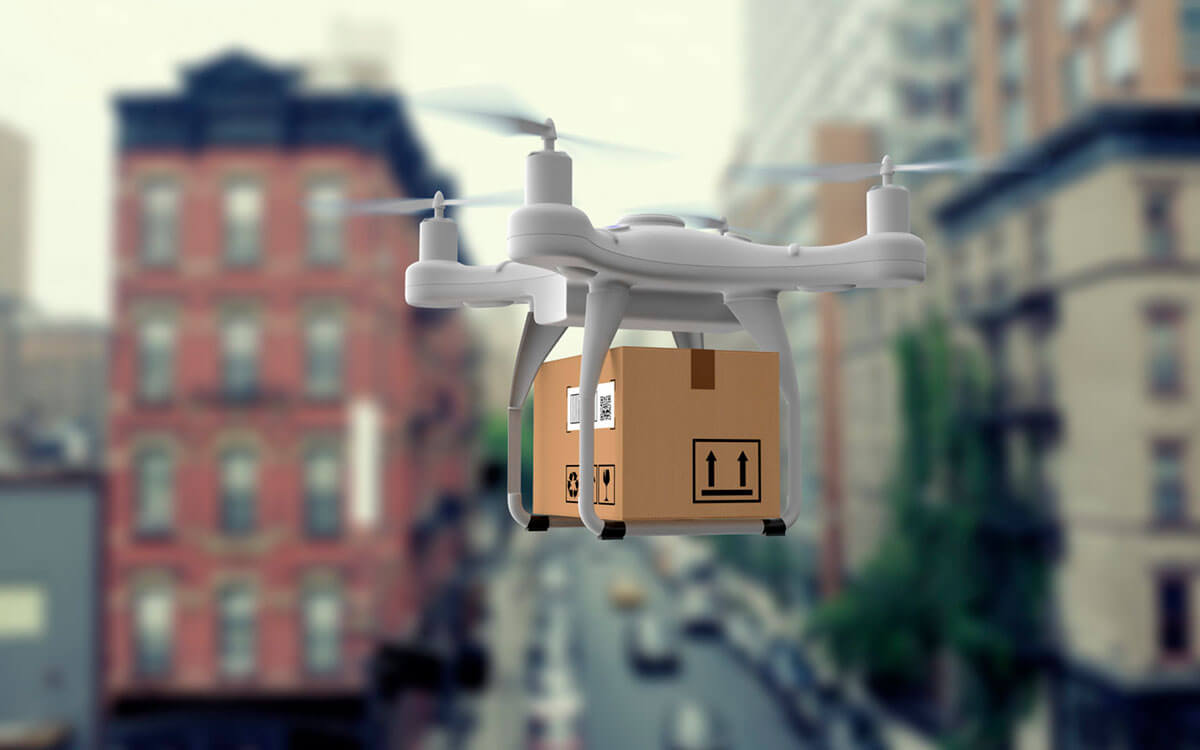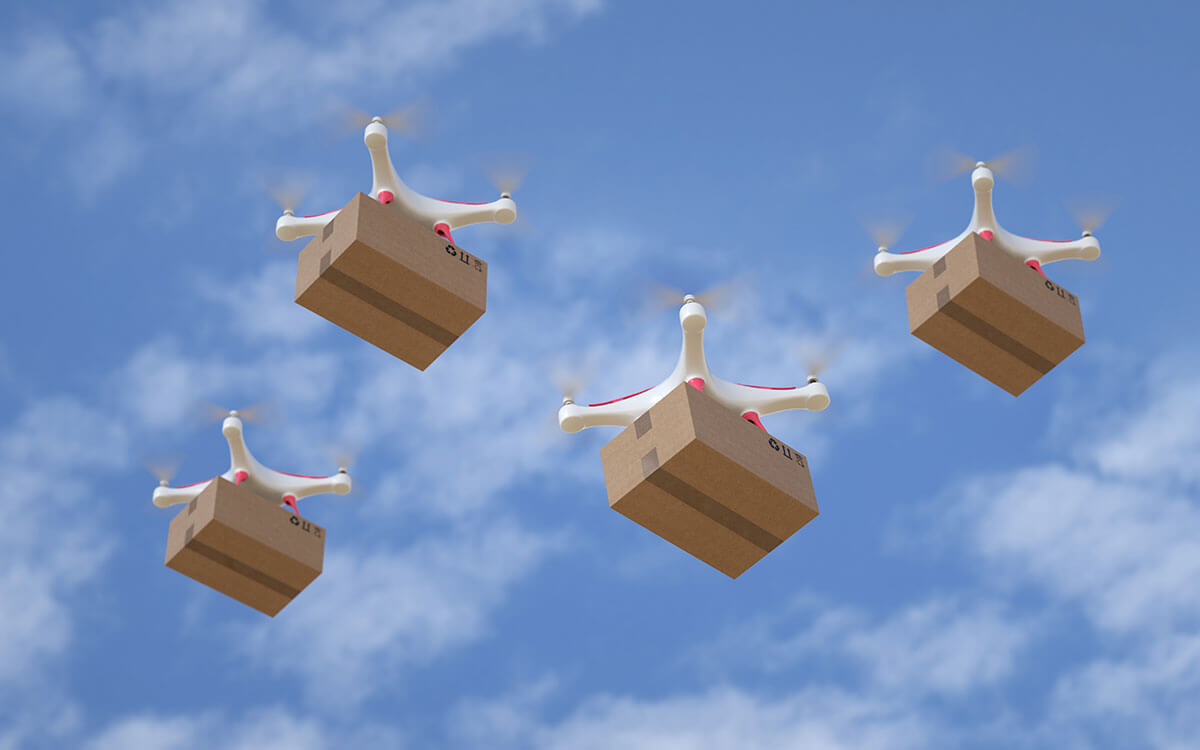What Amazon’s New Drones Could Mean For The Trucking Industry

With Amazon’s approval from the Federal Aviation Administration to operate its fleet of Prime Air delivery drones, you might be wondering how this could impact the future of long haul fleets. Here’s a look at the possible changes drones could bring to the trucking industry.
The First Step Into Modern Deliveries
We all knew it was only a matter of time before drones and other tech began impacting deliveries and the trucking industry as a whole. After all, the concept of drone deliveries has been seriously talked about for years now, with Amazon being one of the leaders in this innovative space.
In other words, we’re taking a step into the future. But what do unmanned drones mean for delivery and truck drivers? Given that drones can bring packages for less money and less time than traditional delivery methods, full-fledged adoption is only a matter of time.
As of right now, Amazon is testing drone delivery in Texas and Ohio, but they’re looking to expand across the USA — and it’s not just Amazon, either. Big players like UPS and Walmart are also getting a slice of the drone delivery game, predicting that this new method could cut delivery costs to under $1 per package at full scale.
What’s even more impressive is that a drone is able to make it from launch site to home in under 30 minutes, helping delivery drivers get more done in less time and with less driving.
One question many people want answers to when they first join the discussion of drone delivery comes down to speed. Amazon’s drone model is capable of traveling up to 50 miles per hour, but how much can they carry? Amazon’s model can carry up to 5 pounds, which represents about 86% of all the products they sell.
How Will Drone Deliveries Work?

You might be wondering how far these drones can go. If permitted to fly outside of line-of-sight from the operator, Amazon says they can go up to 30 miles away, enabling them to launch from warehouses. Currently, they’re launching from a delivery truck within proximity of the home after being loaded with the package.
That means current drone deliveries require two components: a drone and a truck. Three if you count the operator, too! The delivery drive loads the small package into the drone and then launches the drone from their truck’s roof, where it rises to cruising altitude and spots the delivery address from about 400 feet up. It’s then lowered gently to the doorstep with the help of GPS technology.
Drones will operate in rain and snow, but wind can make it a bit of a challenge for the drone to return to its original launch point. But, weather resistance is just one of many pluses that will help drones reach previously difficult addresses for traditional delivery trucks. That means they have a future not just in consumer deliveries, but in delivering emergency and medical supplies to places like remote villages.
What Should The Trucking Industry Expect?

Drones have introduced a whole new way of doing business, and it’s not cutting jobs. The FAA actually predicts these drones could create 100,000 new jobs for operators and generate around $82 billion for the economy over the next 10 years. In the meantime, Amazon and other leaders are continuing to improve battery power and other aspects to ensure they are as incident-free as possible.
So, on one hand, the introduction of delivery drones will help make the job of a truck driver easier. For example, if you have to make four deliveries to a neighborhood, some on the right and some on the left, you can turn all that driving into one stop, launching the drone, or drones, to deliver all those packages. It’s even more effective if you have an outlier delivery address for the day, as the drone means you don’t have to venture too far off-route.
At the same time, there is no doubt that advancing technology could mean a lesser need for truck drivers. Amazon wants to make drones go further and fly more independently, which will reduce the number of trucks needed to launch drones. Of course, the endurance of a drone doesn’t compare to a traditional delivery driver. For now, that means there’s just something about a human driver that drones can’t compete with.

